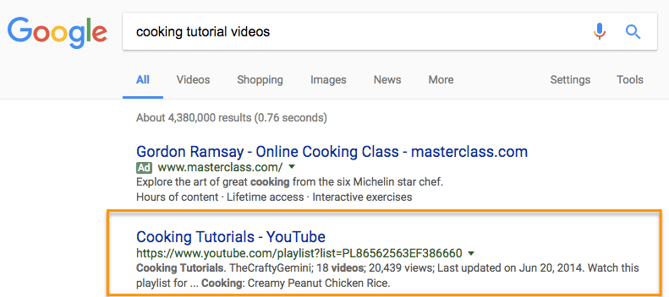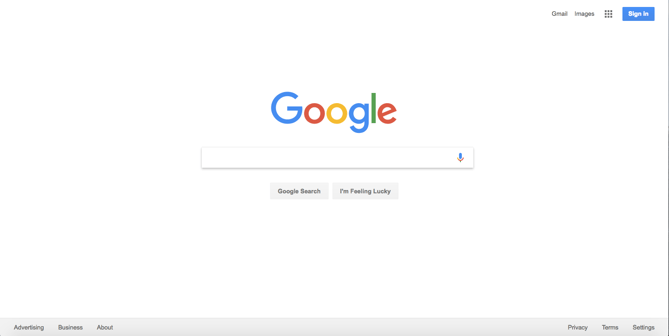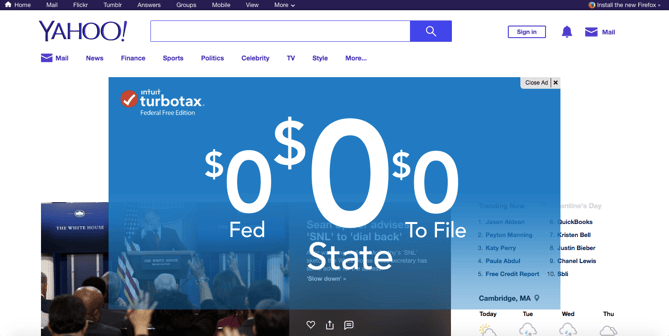
“Google it.” “Can you pass me some Kleenex?” “Let’s take the Jet Ski out.”
These are just a few examples of how brand names have been worked into our common vocabularies. When people ask for a Kleenex, they usually just mean they want a tissue, but because the Kleenex brand is so popular, we’ve started conflating the popular brand name with the object itself.
It’s every brand marketer’s dream for their product, service, or website to become so ubiquitous it replaces the name of the original concept. In this blog post, we’ll dive into the stories of four brands that turned product names into verbs that then replaced the generic terms, along with lessons for marketers on how it was done.
What Is Verbification?
Anthimeria is the rhetorical term for what we’re discussing here: It’s the linguistic term for when we use one part of speech as another part of a speech, such as a noun for a verb. When it comes to branded words, there isn’t an exact formula to explain why some brands become “verbified” and others don’t. For example, why has Super Glue been “verbified,” but Gorilla Glue hasn’t?
Lots of brands have cracked the code for becoming a household name (or verb), and we’re diving into how we think a few technology brands accomplished it in this blog post.
Four Brands That Replaced Product Names
1) YouTube
What it Replaced:
Video streaming website YouTube replaced phrases like “search for a video” or “watch a video online.”
Used in a Sentence:
“You should YouTube the latest Saturday Night Live monologue, Kate McKinnon was hilarious in it.”
Why it Caught on:
A huge part of YouTube’s widespread popularity is its first-mover advantage -- it was one of the first video hosting sites ever founded, and after Google purchased it in 2006, it started growing rapidly. Today, YouTube has more than 1 billion users worldwide, and it accounts for more than 15% of all internet traffic globally.
YouTube has maintained its popularity over more than 10 years with a variety of innovative advertising techniques. Because YouTube is a subsidiary of Google, the biggest search engine in the world, it has the advantage of being one of the first search results when users conduct Google searches for videos. Check it out: When you conduct a Google search for “cooking tutorial videos,” YouTube is the first search result:

Instead of only advertising YouTube online and on social media platforms, in the past several years, YouTube started advertising video creators with billboards, TV ads, and print ads to broaden its reach.
Another factor that’s played a role in YouTube’s popularization is the decline in cable TV subscriptions, especially among younger video viewers. Now that so much video content is available for free online, more viewers are heading to sites like YouTube, Netflix, and Hulu to consume videos, TV shows, and movies they enjoy.
Takeaway for Marketers:
Mix up your advertising strategies to keep exposing your brand to new audiences. A healthy blend of advertising on social media platforms, search engines, and print publications could help generate more interest and recognition of your brand. Here’s our guide to getting started with social media advertising if you need inspiration.
2) Photoshop
What it Replaced:
Adobe Photoshop software replaced any and all terms related to photo editing and manipulation.
Used in a Sentence:
“That picture was definitely Photoshopped.”
Why it Caught on:
Like YouTube, Adobe Photoshop benefited from first-mover advantage: It was one of the first digital photo editing software programs of its kind when it was released in 1990. Because it was first on the scene, other photo editing software created later were judged against Photoshop, which helps spread word-of-mouth recognition further.
Additionally, as other Adobe software was created, the new products were integrated seamlessly with Photoshop, making it easier for designers and visual content creators to do their jobs within the Adobe Creative Suite of products. It’s easier to use a product that works well with others you need to use for your job, rather than piecing together a system that requires multiple programs and types of documents to work together.
Takeaway for Marketers:
Help make it easier for your audience to get things done during the workday. Could you integrate with larger companies, social media platforms, or APIs to make customers’ lives easier? It could be something as easy as partnering with a video hosting company to embed high-quality videos in blog posts, or providing easy links to embed social media sharing buttons on your website that could make the difference in your brand’s stickiness and popularity. Try our Website Grader to see where you could improve the health of your site.
3) Google
What it Replaced:
Search engine Google replaced generic terms for searching for information online.
Used in a Sentence:
“Just Google it.”
Why it Caught on:
Unlike YouTube and Photoshop, Google wasn’t among the first of its kind. There were numerous search engines already available, such as Yahoo! Search, Ask Jeeves, and AltaVista, which Google Search has since come to dominate.
Its simple homepage is easy to use and navigate and doesn’t bombard visitors with a ton of ads or images. Here’s a comparison of how Yahoo! Search and Google Search homepages appear to see what we mean. Which site would you prefer to use?


Google’s algorithm delivers arguably superior results for searchers with the help of different ranking tools and signals. Because search engine optimization (SEO) has become a must-have part of any content marketing strategy, more marketers are trying to get content to rank in Google Search. This helps searchers find the information they’re looking for faster when brands optimize website content according to how people try to find information.
Like other search engines, Google built an array of complementary apps and services, such as Gmail, Google Maps, and others. Google also made sure to do it right and launch a successful rollout of these newer products after its technology had been completely nailed. Google scaled when it was ready, which resulted in great products people loved to use and share with their friends.
Takeaway for Marketers:
Two lessons marketers can implement from Google? Design a simple, easy-to-navigate website, and don’t start scaling up too quickly. We have a guide for redesigning your website the right way here. As for the second piece of advice, don’t grow too quickly if your brand starts expanding its scope. In 2011, the Startup Genome Report determined premature scaling was one of the biggest predictors of startup failure, so make sure your primary product -- software, goods, or advising -- is perfected before you start growing your business further.
4) Skype
What it Replaced:
Video calling and chatting app Skype replaced the term "video chat."
Used in a Sentence:
“Skype me when you’re in Europe.”
Why it Caught on:
One of the most appealing aspects of Skype is how affordable it makes an essential thing (phone calls). Skype eliminated the need for calling cards or international phones -- with one app, Skype made phone calls cheaper and video calls easier.
A less scientific reason for Skype’s success is the name -- it’s catchy and easy to say. Let’s face is, “make a video call” or “call someone internationally” are unwieldy to say, Skype has the advantage of having a short, pithy brand name that is easier to say than the generic term. Shorter names are also easier to remember, which likely helped Skype gain a foothold in the crowded world of messaging apps.
Takeaway for Marketers:
Marketers can learn from Skype that it’s important to have a clear value proposition for your brand’s product or service. If your brand makes something cheaper, easier, or more efficient for people, make sure your audience knows about it so they can start using it. Make the value of your product clear and easily understood in all messaging, from your website to your social media posts. We’ve even designed templates to create your own calls-to-action (CTAs) to add to your web assets to get the ball rolling.
Everyone Wants to Be Popular
There are varied opinions on if brand names becoming verbs is good or bad for business. There’s potential risk for the terms becoming generic as time passes, or for product copyright to be infringed upon. Even Google specifically warns against using the trademark term as a noun or a verb on its website. But isn’t all press good press?
We’re not saying if you follow by Google or Skype’s example, your company’s brand name will become the next big verb. Let’s face it -- that’s pretty rare, and it’s especially challenging unless your brand is the first of its kind in a particular industry. For now, until your brand becomes the next big thing, try some of the strategies that made these brands so successful for greater brand visibility and recognition. If you’re looking for ideas how to get started, check out our guide to social media and public relations branding.
Do you have a lot of brand names in your vocabulary? Share with us in the comments below.

No comments:
Post a Comment